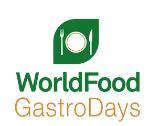ICA Sweden has publicized its annual Trend report 2025. The Swedes are ready to take their taste buds on a journey – and this is not only a culinary novelty, but also a signal to the grocery store about what will drive sales forward.
Quick taste: Increased usage of, for example, miso, crispy chili oil, and furikake in everything from soups to salad dressings. And the love for quick sauces with a lot of umami and flavour continues. Some of the flavour enhancers have turned from being specialty foods into commodities.
Snacking: Healthy and creative snacking like hummus bars that are easy to take with you, creative toppings on egg halves, and cottage cheese. It started in restaurants and is now in retail.
Back to basics: Raw materials, fresh ingredients – especially vegetables – take the main role in our meals, at the same time as we hopefully get a little more money to spend.
Fusion with a twist: Mixing the food traditions of different countries to create new taste experiences. Pasta carbonara flavored with miso, banh mi tacos, or a tandoori pizza.
Imperfection: After years of striving for perfection on social media and in the kitchen, we’re ready for a more relaxed approach. 2025 will be the year we embrace the personal and authentic. To invite the neighbours over for a pie with burnt edges, sloppily arranged pasta, or an improvised recipe with what is in the fridge? But a key question is if the Swedes can afford the new trends, as costs have exploded, and overall, the biggest trend right now is “Low prices”!
 UzFood 2025
UzFood 2025 WorldFood Ukraine
WorldFood Ukraine